Last updated on March 24, 2023
What exactly is the definition of too far when it comes to food? Are you an adventurous eater who is willing to try just about anything? Then you will DEFINITELY want to get in on this! From some seriously bizarre pairings and interesting street food to things that you didn’t even think were edible, the Philippines surely have some quirky foods. You’ll either be losing your appetite or excited to try these delicacies!

Pork brains, ant eggs, and skewered and grilled intestines are just the tip of the iceberg. There is so much to learn about some of the unique Filipino foods that are regularly served in restaurants and street food carts. We’ve rounded up 14 facts all about exotic food in the Philippines. Read on…if you dare.
Think you’re an expert already? Then get ready to test your knowledge with our challenging exotic foods in the Philippines quiz that is coming soon! Until then, keep reading on to learn some fun and interesting facts.
Facts About Exotic Foods In the Philippines
Balut – Fertilized Duck Egg
We’re starting off with one of the more bizarre Filipino food options! Balut is Filipino street food consisting of a fertilized duck egg that is still inside the egg. The duck eggs are fertilized for up to 21 days and then boiled whole. The developing duck embryo is usually eaten from its shell accompanied by a spicy vinegar dipping sauce.
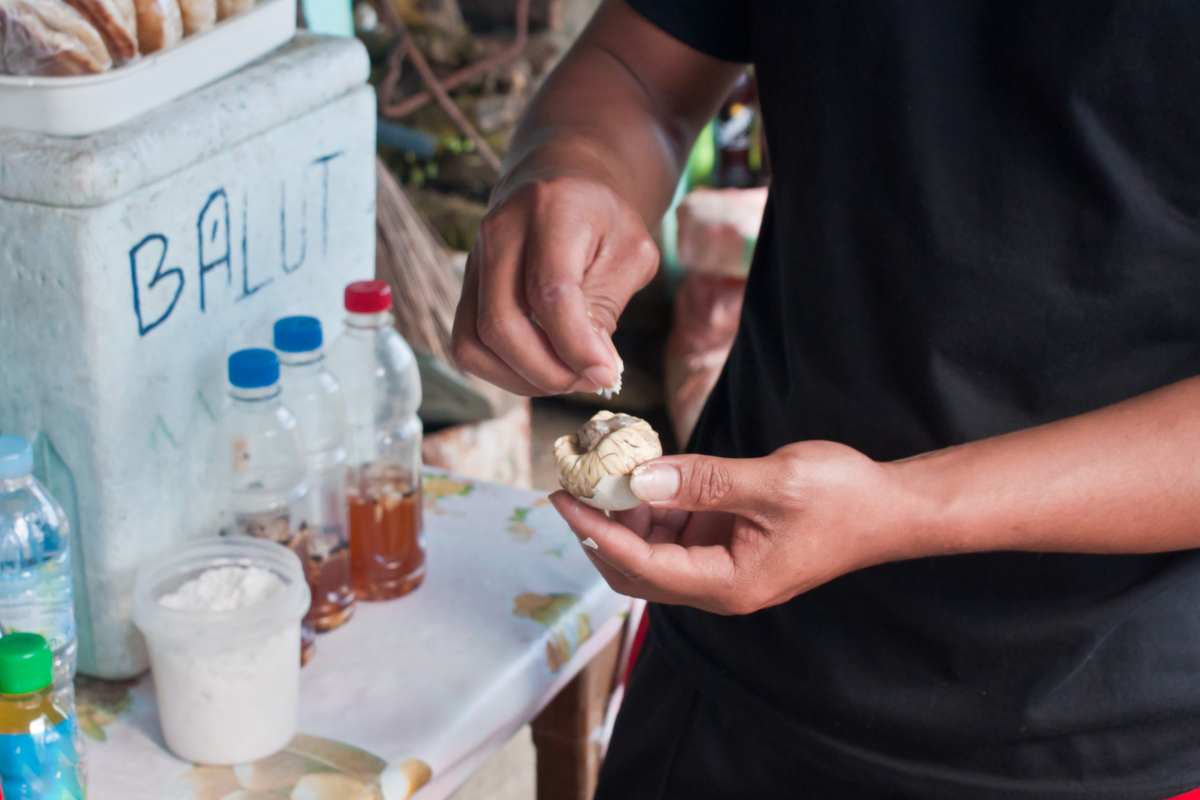
Probably what makes balut the most unique is the appearance of the duckling. With the long fertilization process, the little ducklings are mostly fully formed, complete with eyes, a beak, and sometimes even feathers. The beak is often too hard to eat however so it’s acceptable to spit it out. Most locals know this is a bit out there so it has become a bit of a rite of passage to push foreigners to try the exotic dish and eat balut while visiting for their first time.
Isaw – Skewered Pork Intestine
Isaw is skewered and grilled pork intestine (sometimes it’s chicken) and is a Filipino street food favorite. To make isaw, the intestines are thoroughly cleaned, boiled, skewered on barbecue sticks, and then grilled to eat. The skewers are best enjoyed with a dip of soy sauce or spiced vinegar before taking a bite.
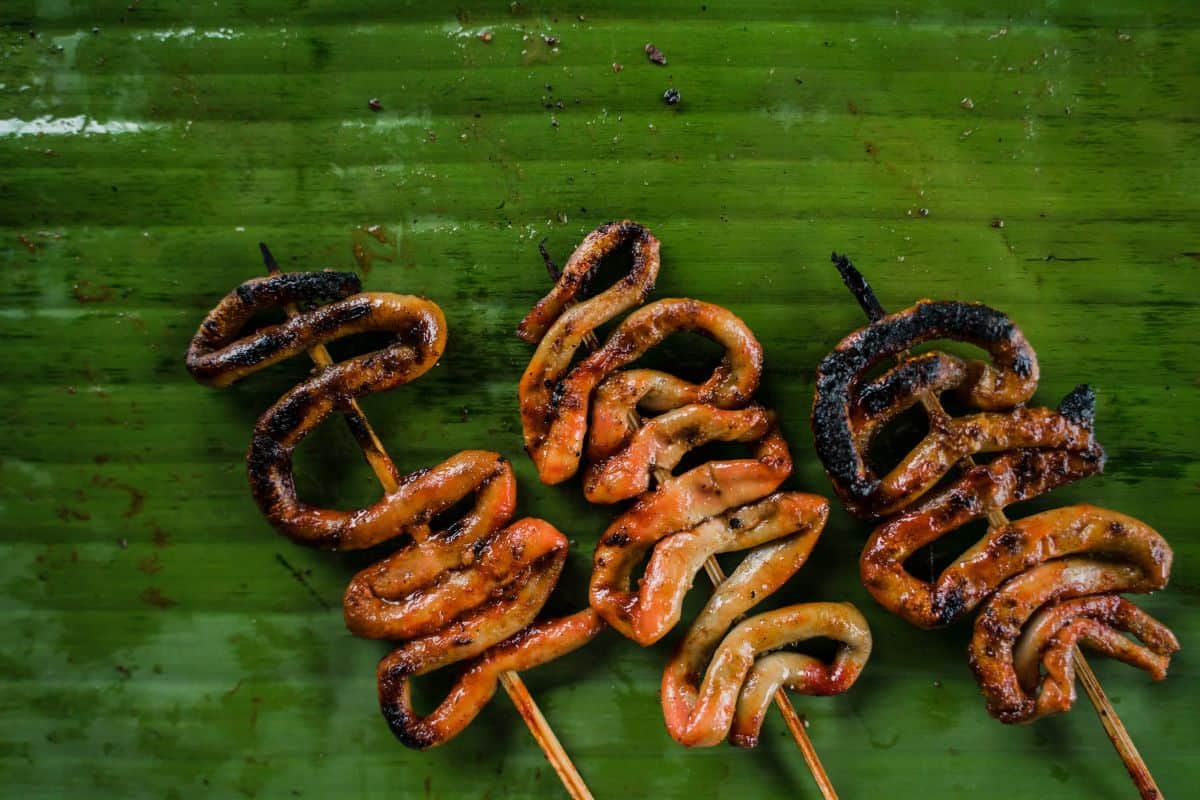
Tamilok – Woodworms
“Wood worms” or “ship worms” are common colloquialisms for Tamilok! A species of saltwater clam that looks like long, thick worms and whose primary food source is decaying wood. They look kind of extraterrestrial and subsist on a weird diet, but people have figured out that they taste delicious. Surprisingly eaten raw, this exotic Filipino food is usually dipped in vinegar mixed with calamansi juice and some spicy chili oil. Most agree that it is similar to raw oysters in texture but tastes sweeter and milkier, almost like coconut milk.
Abuos – Ant Eggs
Dishes containing ant eggs can be found in a wide variety of cultures around the world, so it isn’t specific to exotic food in the Philippines. Having them cooked adobo style is very specific to Filipino foods though! While the Filipino twist makes it very flavorful, you can also eat Abuos sauteed in garlic or even just raw. The common consensus is that in raw form, the ant eggs are buttery and nutty in flavor with a soft texture.
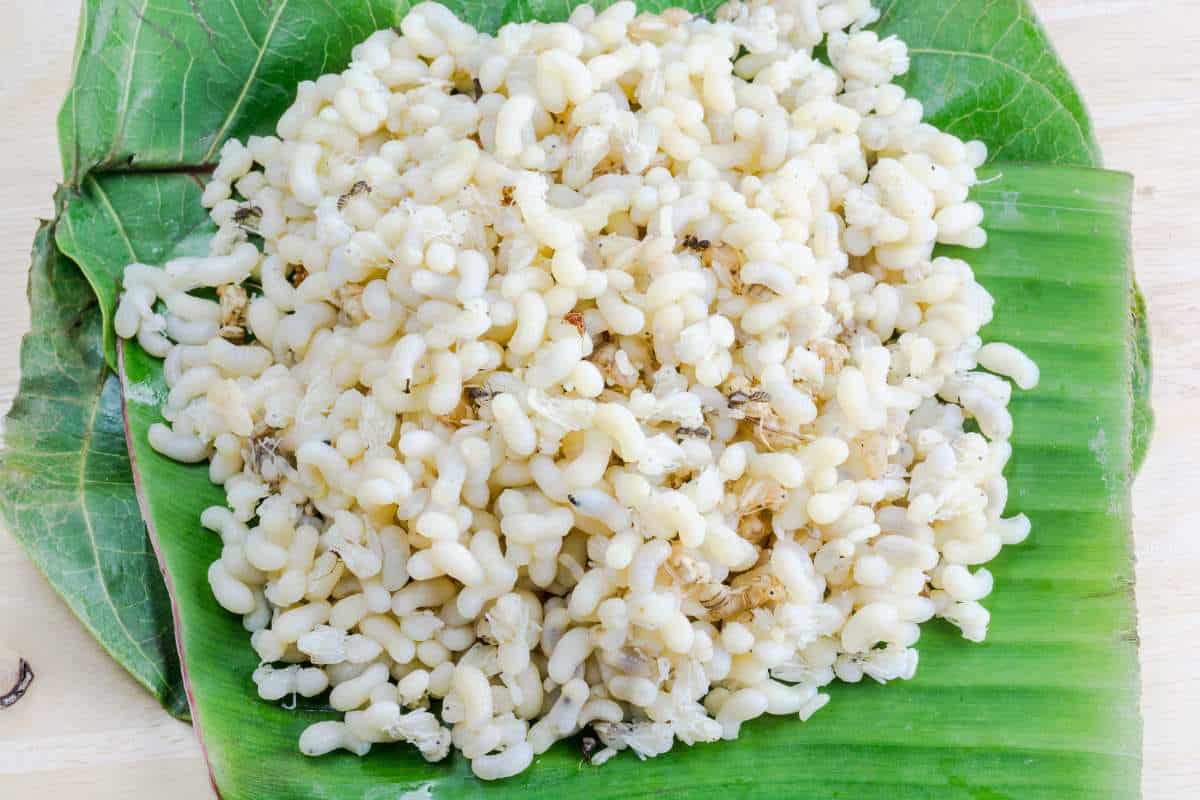
Dinuguan
To help you understand why this one is considered such a unique dish, Dinuguan is also known as pork blood stew! The name dinuguan stems from the root word dugo, which is the Filipino word for “blood.” This savory Filipino stew is made of bite-sized pieces of pork cooked in pig’s blood, along with vinegar, garlic, onions, chili peppers, and some other spices. Some varieties of this dish even include organ meats such as lungs and heart, as well as intestines, ears, and snout. Although it is a little out there, it is a very popular and flavorful dish that’s always accompanied by puso, small steamed Flipino rice cakes (also known as hanging rice).
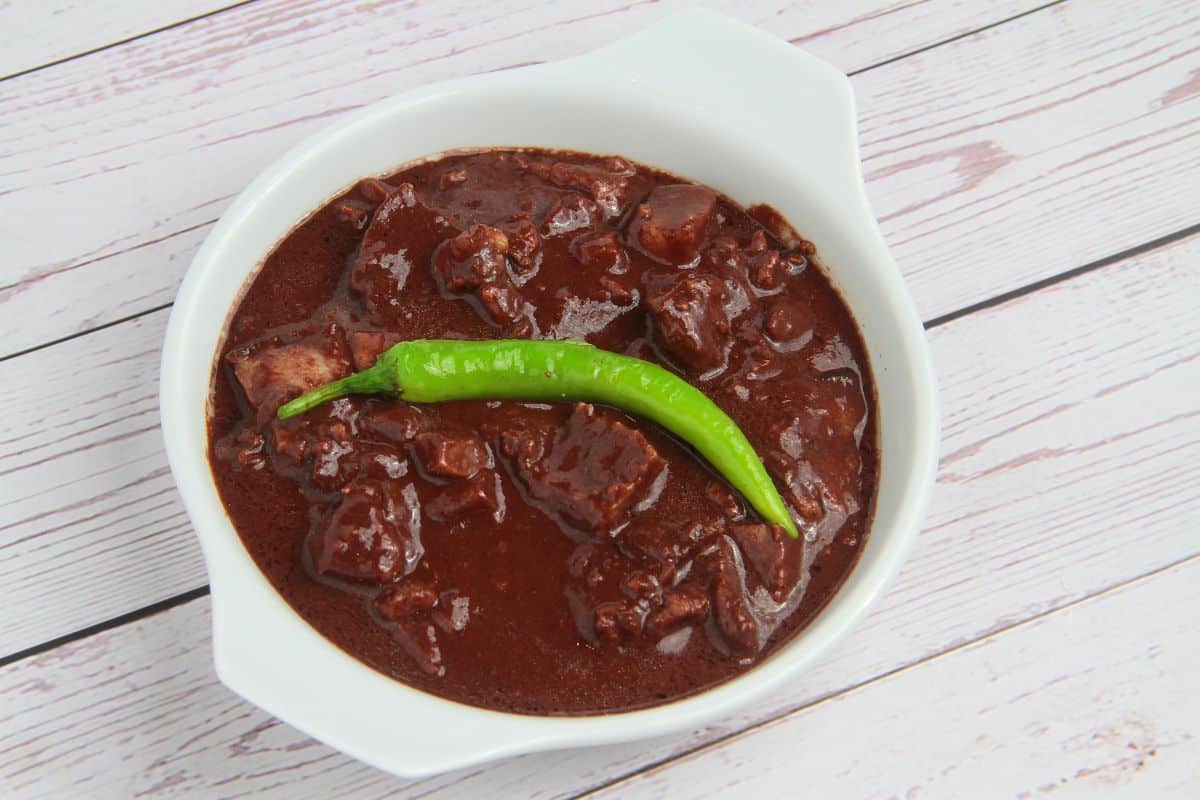
Adobong Kamaru – Mole Crickets
Insect cuisine is gaining more recognition, but the Philippines have been ahead of this trend for some time! Adobong kamaru is a dish made with mole crickets cooked adobo style. Typically adobo dishes are made with chicken or pork meat simmered slow in vinegar, garlic, onions, chili peppers, and tomatoes but in adobong kamaru, mole crickets are used instead. Fun fact: adobo is the national dish of the Philippines!
Soup No. 5
This one probably tops the list of unique foods on this exotic Filipino food list! In this soup, tasters experience the intriguing flavor and texture of a bull’s penis and testes. Thought to have supreme aphrodisiac effects, it is referred to as “Soup Number 5” on restaurant menus so that people aren’t deterred by the ingredients.
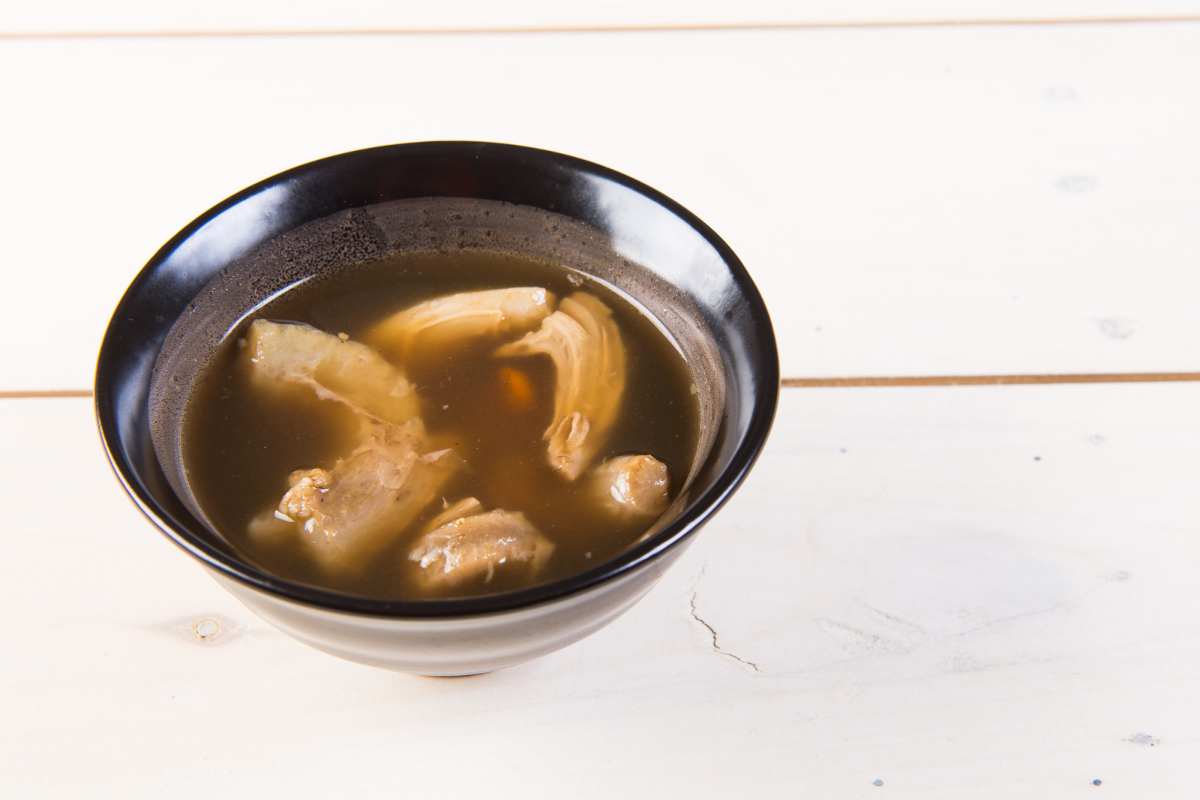
The ingredients start out as any typical Filipino soup, flavorful broth with garlic, onions, fish sauce, chili peppers, lemongrass, and other spices. The organs are then added after a thorough cleaning process and boiling for a few hours until tender, then added to the broth. Some restaurants take liberties with the basic (but exotic) soup and also add in chicken feet in some instances. Beyond the aphrodisiac claims, what makes this such a popular exotic food? Many Filipinos also claim that Soup Number 5 is a great cure for a hangover!
Betamax (Congealed Chicken or Pork Blood)
Another popular street food in the Philippines is Betamax and is served on a stick and grilled. With this variation of the dish, the meat is made from congealed chicken or pork blood and cut into cubes and dipped in soy sauce. Betamax gets its name from the cassette tape format (beta) from the 1970s which the block-like shapes resemble. Who knew that grilled blood cubes could be so delicious?!

Chicharon Bulaklak – Mouth Watering Crispy Pork
You may have heard of chicharon to describe deep-fried pork rinds in other countries. But in the Philippines, it can also refer to deep-fried pig intestines, chicken intestines, and chicken skin! Pork mesentery is used to make chicharon bulaklak, a fold of thin membrane that helps support the small intestine to the abdominal wall.
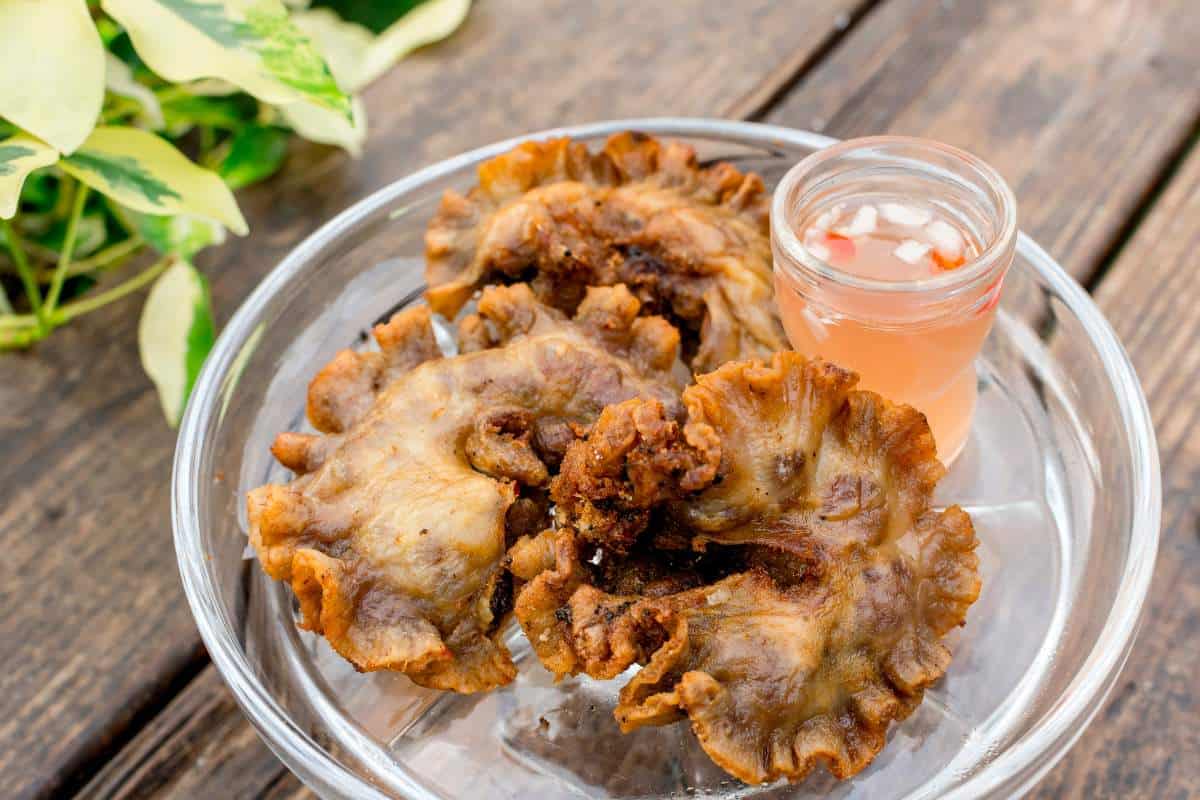
When this tissue is deep-fried, it comes out crunchy, and takes on a frilly, flower-like appearance, which is where the name chicharon bulaklak comes from (bulaklak is the Filipino word for “flower”). Pair this popular snack with a side of spiced vinegar, calamansi juice, and a cold beverage for optimal flavor to your taste buds.
Helmet (Chicken Heads)
There is a theme arising from these exotic Filipino dishes, no part of an animal is wasted! Helmet is quite literally a chicken helmet, or head that is typically grilled on a skewer. Other variations of this dish have the head battered and deep fried but both are good dipped in soy sauce.
Inihaw Tenga Baboy – Walkman or Pork Ears
More food names stemming from outdated technology! Walkmans were all the rage in the late 80s and early 90s as a portable way to listen to music. Skewered and grilled pig ears rose to popularity as an exotic food in the Philippines around the same time as the Sony Walkman gained popularity so the name for this street food seems fitting.
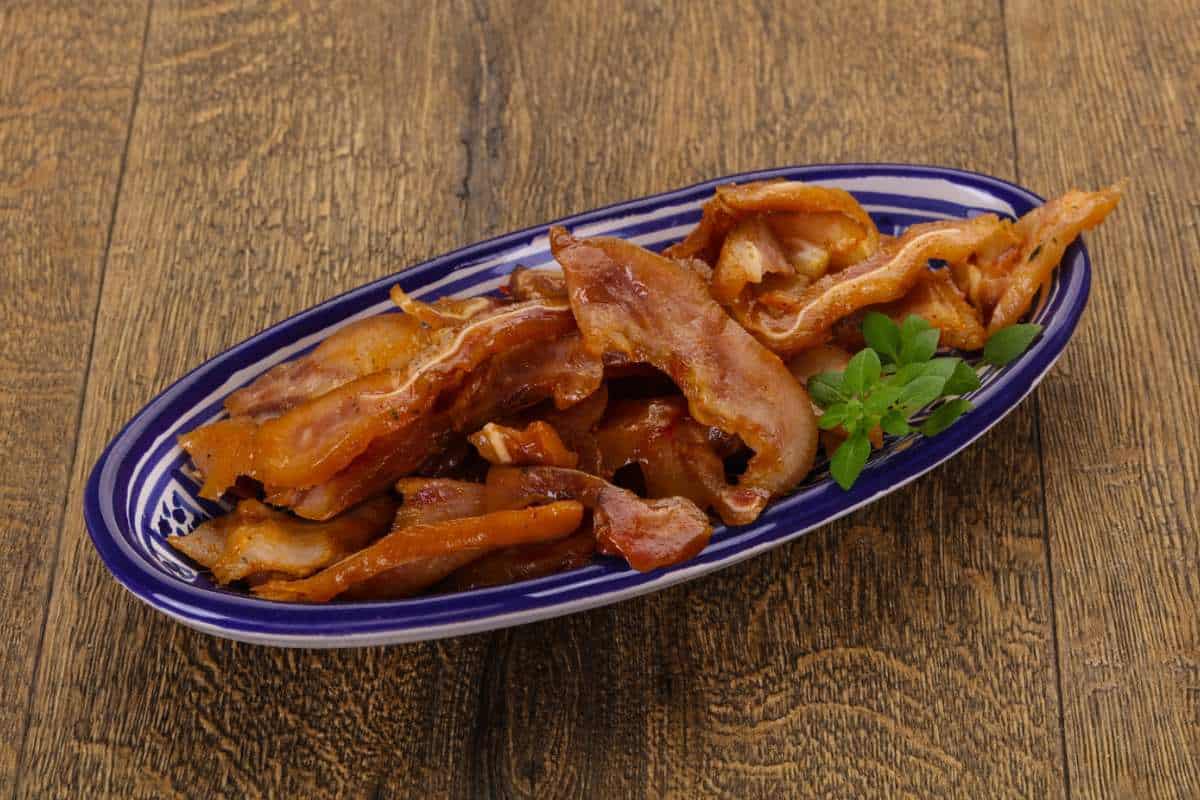
Adidas (Chicken Feet)
Adidas are a tongue in cheek name for chicken feet in the Philippines. As far as exotic foods go, chicken feet are surprisingly common in a few cultures so seeing this with a Filipino twist of being skewered, marinated, and grilled is not surprising! One could argue that chicken feet are one of the most popular exotic food found worldwide.
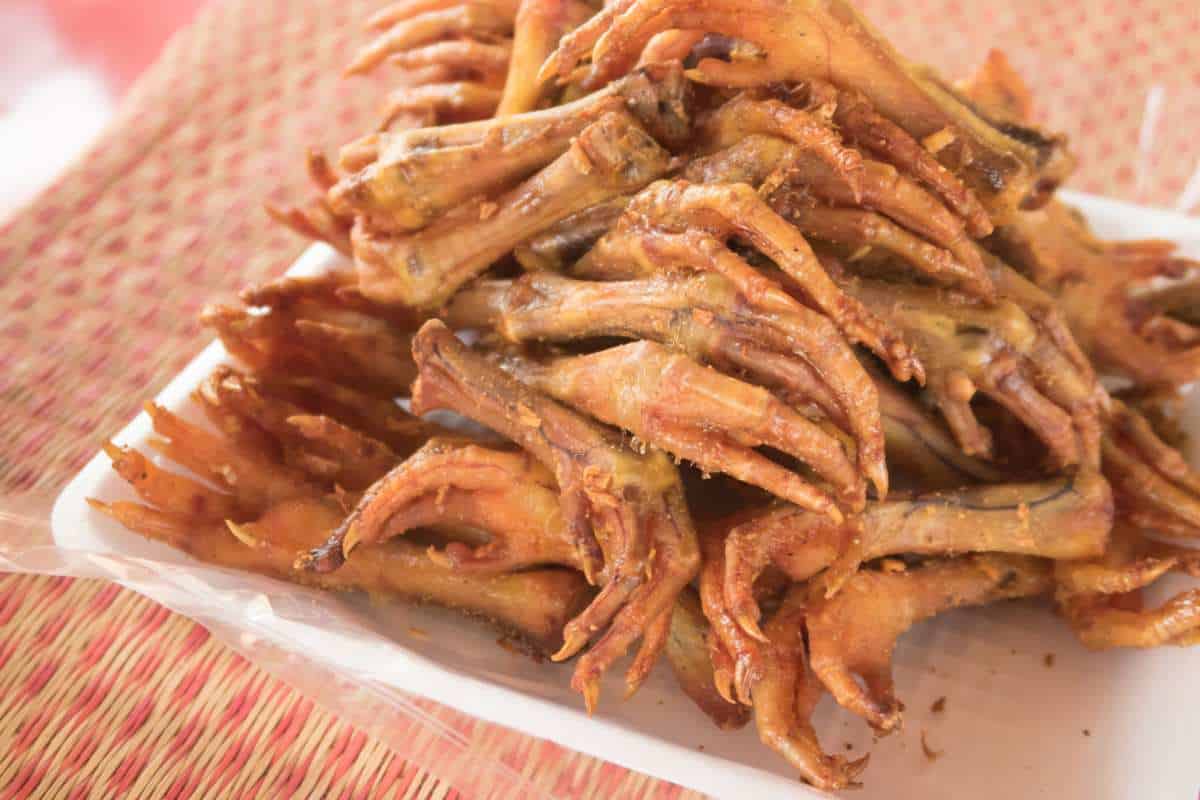
Tuslob Buwa – Pork Brain Stew
In this popular street food dish, pork liver and pork brain are the main ingredients that then get sauteed with shrimp paste, garlic, onion, and chilis. The longer it boils over the fire, the thicker it becomes! The name tuslob buwa roughly translates to “dipped in bubbles,” hinting at not only the consistency but also how one is supposed to eat it. What sets this one apart from other exotic food in the Philippines is that the bubbling dish is meant to be shared and patrons to the street food vendors are usually only charged for the hanging rice that is used to dip in the stew.
Karioka – Sweet, Sweet Rice Balls
Another skewered snack makes the list of exotic food in the Philippines! This one however is a deliciously crunchy and chewy sticky rice dessert. To make karioka, a rice ball made of glutinous rice and coconut milk is rolled together into a dough that is deep fried and then dipped in a coconut and sugar sauce (similar to caramel). Sometimes these desserts are also topped with sweetened shredded coconut.
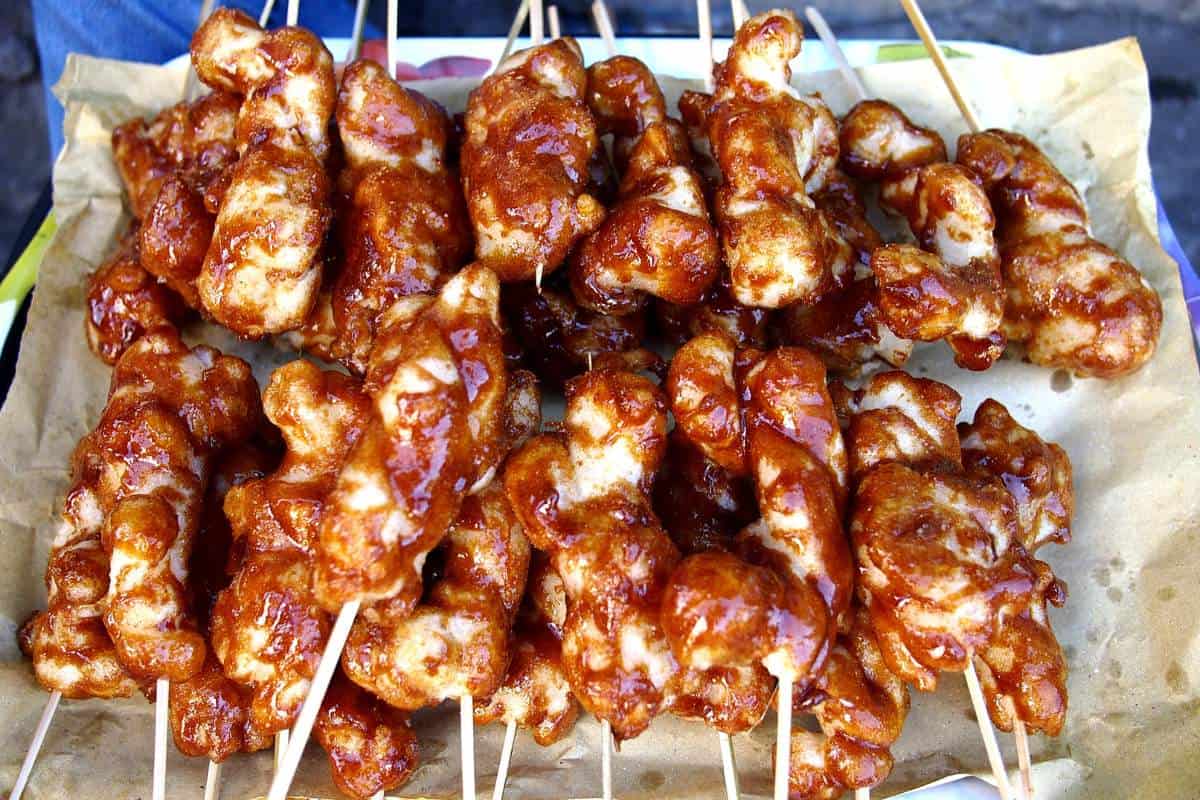
Now that you’ve read the whole post, get ready to test your knowledge in our upcoming quiz about exotic food in the Philippines!
[adinserter name=”Block 1″]





